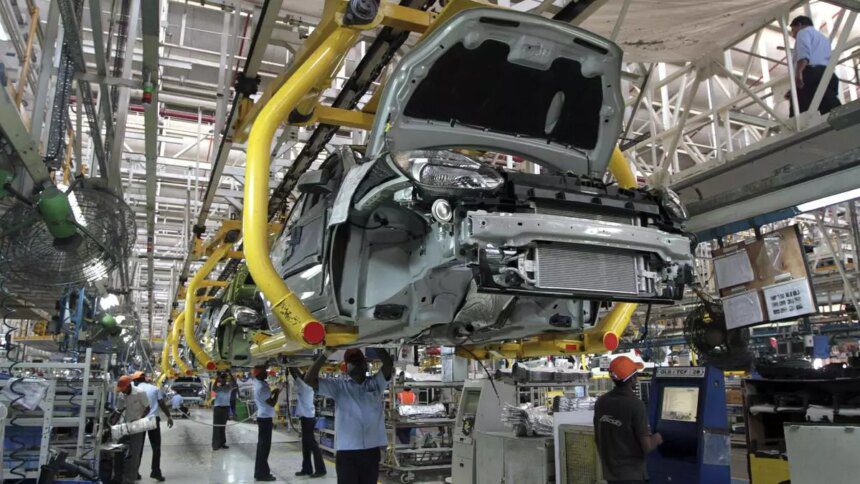The Commerce Ministry has urged all states and Union Territories (UTs) to create a “City Level Economic Vision for 100 Tier 2 and 3 Cities” by June 2026. This initiative is part of a broader strategy aimed at establishing manufacturing hubs in 1,039 towns across the country, as part of comprehensive reforms under the “whole of nation” approach.
This framework was introduced by the Department of Promotion of Industry and Internal Trade (DPIIT) during the Fourth National Conference of Chief Secretaries, held from December 13-15 last year. The selection of Tier 2 and 3 cities aims to extend manufacturing opportunities beyond the more industrially developed Tier 1 cities, significantly increasing the manufacturing sector’s contribution to the overall Gross Value Added, which currently stands at 17 percent.
The government views the development of manufacturing in these smaller cities as crucial for India’s economic advancement. According to a note circulated for discussion during the national conference, addressing issues such as infrastructure deficits, land availability, logistics efficiency, workforce skills, and compliance burdens will help establish a robust manufacturing ecosystem in these regions.
The identified 1,039 towns not only offer a demographic advantage with a lower cost of labor but also allow states with a lower Gross State Domestic Product (GSDP) to focus on capital-efficient, labor-intensive industries initially. Conversely, states with advanced manufacturing sectors and higher GSDP are encouraged to prioritize research and development, high-tech industries, and innovative practices. This strategy is designed to enable each state to capitalize on its unique advantages while tackling their respective challenges.
Key enablers such as industrial infrastructure, logistics, ease of doing business, and entrepreneurship have been outlined, with corresponding deadlines established for the states and UTs to implement comprehensive reforms. States are expected to develop and execute a State Logistics Action Plan in accordance with state logistics policies and LEADS assessments by June 2026. Additionally, by next month, they must identify provisions in state laws and regulations that can be decriminalized to facilitate an improved business environment.
To enhance industrial infrastructure in Tier 2 and 3 cities, the Ministry of Commerce not only seeks the creation of a city-level economic vision but also proposes a flexible land lease policy in industrial parks and the establishment of 100 plug-and-play parks by December 2025. Furthermore, states are encouraged to utilize the PM Gati Shakti National Master Plan for project planning exceeding a certain monetary threshold and to upgrade the industrial skill infrastructure of 1,000 Industrial Training Institutes (ITIs).
In terms of logistics, states are advised to implement a State Logistics Action Plan following their logistics policy and LEADS assessment by June 2026. They should also develop City Logistics Plans for 25 Tier 2 and 3 cities by December 2026, along with district-level reforms related to inspections, payment gateways, and industrial land allocation, using the District Business Reform Action Plan framework.
For enhancing the ease of doing business, the central government recommends improvements to the state’s single-window system to meet benchmarked timelines, documentation, and procedural steps, to be completed by December 2025. They also encourage states to pursue the Reducing Compliance Burden (RCB) Plus initiative to identify and lower compliance requirements across various central and state acts by next month, along with identifying areas for comprehensive decriminalization of state laws, starting with municipal regulations.
To support skill development and entrepreneurship, each state is tasked with conducting skill gap analyses for emerging manufacturing sectors by December of this year. Additionally, they should help establish 100 new startup incubation centers and aim to reduce trainer vacancies in ITIs by 50 percent by December 2029.
The government intends to increase the share of manufacturing in employment from the current 12 percent to 22 percent by 2047. By promoting manufacturing in Tier 2 and 3 cities, it is believed that overall employment opportunities will expand. The share of manufacturing in employment has remained relatively unchanged at 12 percent since 1972-73.










